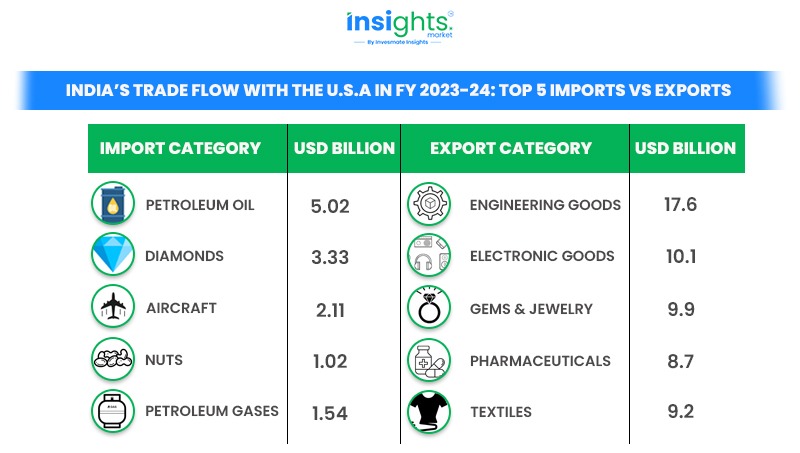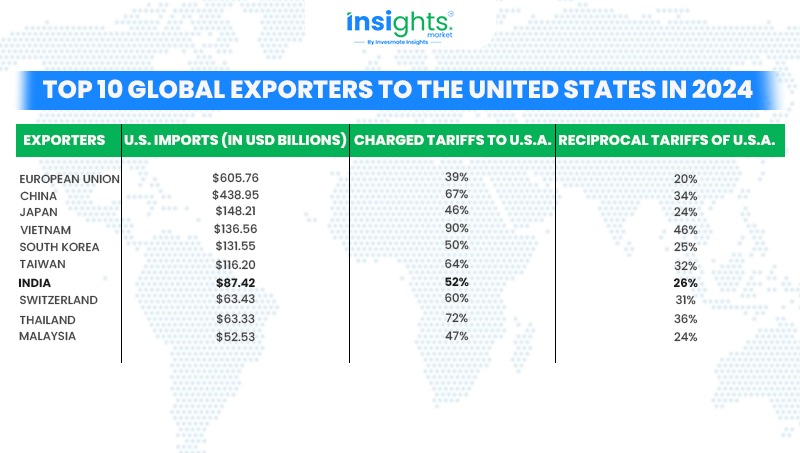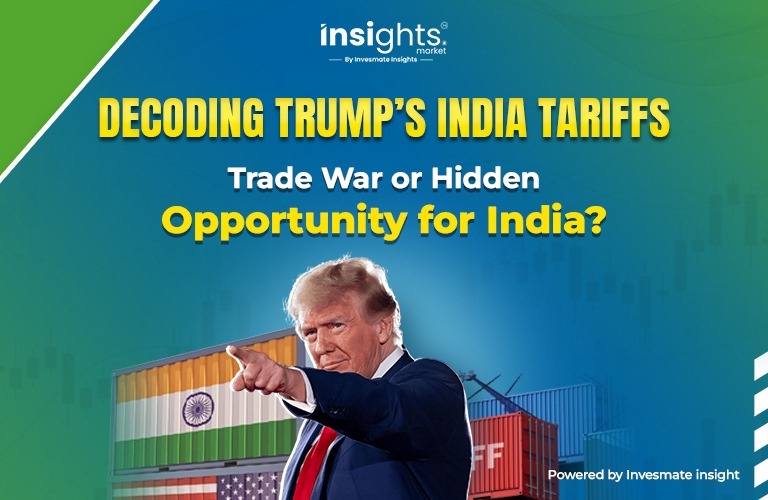![]()
In a major move that’s stirred global markets, U.S. President Donald Trump has announced a 27% tariff on all goods imported from India. The decision has raised alarms among Indian exporters, investors, and policymakers. At first glance, it seems like a serious blow to India’s trade and economy—but could there be more to the story?
Might this challenge actually be a disguised opportunity for India to rework its global trade strategy and come out stronger?
Let’s explore in this blog.
What Sparked This Tariff Storm?
On April 3, 2025, President Trump announced that India imports into the U.S. would be subject to a 27% tariff, starting April 9. His justification? That India has been imposing significantly higher tariffs on U.S. goods—sometimes up to 52%—while the U.S. has kept its market relatively open.
This decision is part of a broader strategy by the U.S. to reshape global trade relationships, with countries like China, Japan, South Korea, and the European Union also facing steep tariffs.
This additional 27% duty comes on top of existing tariffs, making Indian products costlier for American consumers and businesses.
Which Sectors Are Most at Risk?
India exports goods worth $75–78 billion annually to the U.S., making it one of India’s biggest trading partners. Several sectors are expected to feel the pinch from this new tariff:
- Gems and Jewellery: The U.S. is the top buyer of Indian diamonds and jewellery. With total duties now potentially exceeding 40%, demand may fall.
- Pharmaceuticals: This key sector was initially exempt from the tariff but is now under review due to national security concerns.
- Automobiles and Auto Parts: Tariffs on these could total up to 52%, making Indian vehicles and components far less competitive.
- Metals: Major metal companies like Tata Steel, Hindalco, and Nalco have already seen share prices fall between 5–9% amid fears of excess supply and dumping by global rivals.

Market Response: Jitters and Volatility
Financial markets responded sharply. The Nifty Metal Index fell 6.6%, its steepest drop since the 2024 general election.
Stocks of companies like Hindustan Copper, Vedanta, and National Aluminium took a hit. Analysts also warn that countries like China, Japan, and South Korea, which are also facing U.S. tariffs, could dump their excess goods in India—causing prices to fall further due to oversupply
Is the Outlook All Negative?
The outlook for India amid the U.S. tariff hike isn’t entirely negative, as it opens up unexpected opportunities. While the 26% tariff poses challenges, India remains more competitive than peers like Vietnam or Cambodia, which face higher duties. India stands to benefit from the global shift away from Chinese supply chains. Moreover, the government’s calm, diplomatic approach—favoring trade talks over retaliation—has boosted its credibility. This disruption could ultimately accelerate domestic manufacturing, diversify export markets, and enhance India’s global trade standing.
India’s Smart and Measured Response
While countries like China and the EU are preparing retaliatory tariffs, India has taken a more measured and strategic approach.
Government officials suggest that India is unlikely to respond with counter-tariffs. Instead, it is working toward a preferential trade agreement with the U.S., possibly by the end of 2025.
India has already made a few goodwill gestures:
- Reduced tariffs on high-end American goods.
- Removed the digital services tax, a sore point for U.S. tech firms.
- Initiated dialogues to address trade imbalances.
This calm and cooperative approach could help India gain long-term trust and secure better trade terms.

A Bigger Trade Battle Unfolding
Opportunities Hidden in the Chaos
Yes, the short-term pain is real—but India can also find some unique opportunities in this disruption:
- Global Supply Chain Shift
With many countries moving operations out of China, India can position itself as a reliable alternative for electronics, chemicals, textiles, and more.
- Strengthening Domestic Industries
If India effectively curbs dumping, it could protect local industries like steel and aluminum, stabilizing prices and boosting demand.
- Focus on Quality and Branding
Indian exporters may now be pushed to improve product value, design, and branding—key for success in premium markets.
- Fast-Tracking Trade Partnerships
India may accelerate trade talks with Europe, Latin America, Africa, and others, helping reduce its dependence on U.S. trade.
What Should Businesses and Investors Do?
Experts advise staying calm and strategic:
- Don’t panic-sell export-heavy stocks.
- Focus on companies with strong domestic demand, like pharma, FMCG, and steel.
- Keep an eye on trade policy developments and diplomatic talks.
- Exporters should diversify their markets—don’t rely solely on the U.S.
Stocks like SAIL, JSW Steel, and Jindal Steel, which have a greater domestic focus, may perform better than those reliant on exports.
What Sparked This Tariff Storm?
On April 3, 2025, President Trump announced a steep tariff on Indian imports, originally listed as 27% but later corrected to 26% in the official order. The sudden one-point change, also seen in 17 of the 57 affected countries, raised eyebrows, though no explanation was provided.Trump justified the move by citing India’s high tariffs on U.S. goods—up to 52%—while the U.S. has maintained relatively low duties.
Final Thoughts: A Test of Patience or a Platform for Progress?
President Trump’s 27% tariff on Indian imports—later corrected to 26%—has certainly shaken India’s trade ecosystem. It’s a reminder of how quickly international trade policies can shift and how deeply such moves can impact markets, sectors, and investor sentiment. But India’s calm and calculated reaction, paired with global circumstances, may actually turn this moment into a strategic pivot point.
Instead of retaliating, India has chosen dialogue, reforms, and diplomacy—signs of a maturing economic power willing to play the long game. While short-term challenges remain for key sectors like metals, gems, and auto parts, the bigger picture holds possibilities: stronger domestic manufacturing, new global trade partnerships, and a push for higher quality exports.
This tariff storm could have been purely destructive. But with the right steps, India may just turn it into a stepping stone toward a more balanced, resilient, and globally competitive future.
FAQs
President Trump claimed that India levies high tariffs on U.S. products—up to 52%—while the U.S. has comparatively low duties. The move aims to level the playing field and push India toward fairer trade terms.




